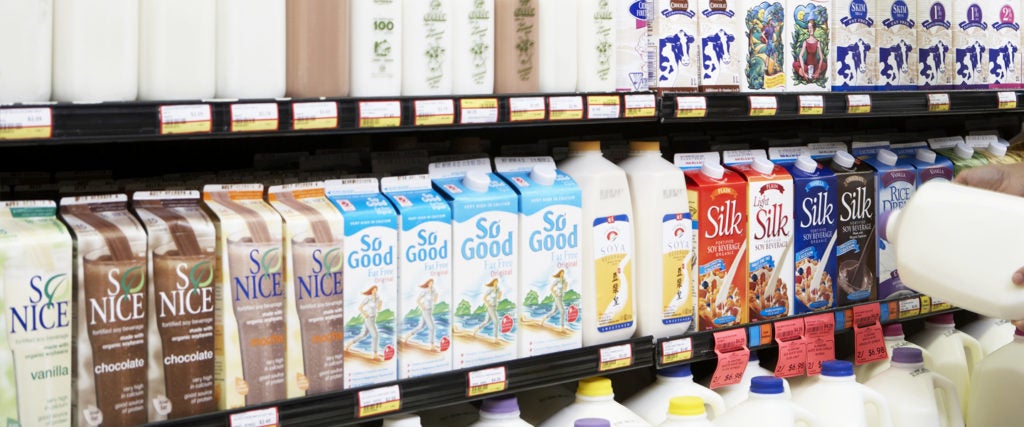Unless you’re a growing child who won’t drink anything else, I personally find you a little bit gross if you willingly purchase dairy milk. After all, there are so many decent, affordable alternatives available. And most of the time, these alternatives are better for you, too. That said, some alternative milks have so many different ingredients, you’ve gotta wonder how healthy they can really be. Factor in the environmental cost of producing them, and alternative milks aren’t always a perfect choice. Putting each piece of the milk puzzle together, though, non-dairy milks still come out ahead of the real thing.
At your typical grocery store, you can now easily find soy, almond, coconut, oat, flaxseed and cashew varieties of milk, often with multiple different nutrition and flavor profiles among them. Some have an added sweet vanilla flavor, pushing up the sugar content, while others are fortified with extra protein. In its most basic form, though, alternative milks really only require two ingredients: whatever it is they’re “milking,” and water. Plenty of people even make their own milks at home by blending up oats or almonds and straining the contents.
In theory, then, alternative milks can be a super clean replacement for dairy, without any weird preservatives or thickeners. They may not provide much nutritionally, but they’re usually a low-cal, low-fat option for cereal or coffee. Store-bought varieties might offer more vitamins and protein, but they might also have some not-great fillers in there, as well.
One of the bigger bogeymen in the alternative milk world is carrageenan, a thickener and preservative that helps prevent separation. There’s not a ton of conclusive evidence proving carrageenan to be bad, but some studies suggest it could cause gastrointestinal inflammation, allergies and even arthritis in the long-term. Because of its reputation, many bigger brands like Silk have removed it from their products. Taking a look at the Silk website, the majority of its milk options contain straightforward, relatively short lists of ingredients containing primarily water, soybeans/almonds/oat/whatever the “milk” is made of, salt, natural thickener gellan gum and added minerals.
Another bogeyman is soy itself. Like carrageenan, the actual evidence against soy is inconclusive. According to a blog post from Harvard Medical School’s Harvard Health Publishing, soy protein isolate may have estrogen-like effects. Fortunately, that’s not the type of soy in most soy milks. Instead, most soy milks are made from whole soybeans, which Harvard says is perfectly fine to consume several times per week. A nutritionist actually ranked soy milk as the healthiest of all milks previously for us.
Of course, anyone who is concerned about soy or has a particular allergy has plenty of other options to choose from. The nutritional and environmental profiles of each varies –– almonds, for example, require a great deal of water to produce. However, gallon for gallon, almond milk requires half as much water, produces a third of the greenhouse gas emissions and utilizes less than an eighth of the land as dairy-based milk. Most other alternative milk options are even less environmentally intensive.
Bottom line, alternative milks are still largely better for you and the environment than dairy milk. Considering a third of people in the U.S. are lactose-intolerant, it’s possible humans aren’t even designed to consume dairy, anyway. When purchasing alternative milks, the unsweetened, unflavored varieties tend to be healthiest, but check the ingredients and nutrition label for yourself. Worst-case scenario? You can make your own filler-free versions at home.

